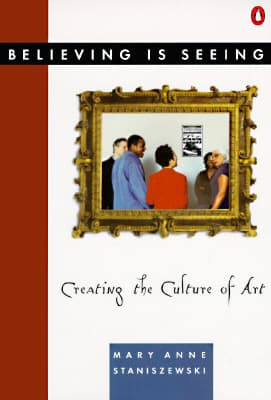
Book Review Summary: Believing Is Seeing: Creating the Culture of Art
Introduction
"Believing Is Seeing: Creating the Culture of Art" by Mary Anne Staniszewski offers a fresh perspective on the world of art. The book delves into the criteria by which artworks are valued and challenges conventional notions of what art is. Staniszewski's multicultural scope and glittering intelligence make this book a valuable read for anyone interested in art history. In this article, we will explore the author's background, analyze the views of readers, and summarize the reasons for recommending or not recommending this book.
About Mary Anne Staniszewski
Mary Anne Staniszewski is an art historian, former lecturer, and professor of contemporary art, culture, and critical theory at Rhode Island School of Design. With her extensive knowledge and experience in the field, she has created a thoughtful and accessible survey on modern and postmodern art theory. Staniszewski's teaching lectures on art history inspired her to write this book, which brings her insights to a wider audience.
Analysis of Views
-
Fresh Perspective: Readers appreciate Staniszewski's ability to challenge conventional art histories by probing beyond the surface of standard narratives. The book offers a new way of looking at artistic heritage, bridging the gap between classical Japanese painting and contemporary pop culture.
-
Easy to Understand: Many readers find Staniszewski's writing style engaging and easy to follow. The book is presented in a slide-lecture format, making it accessible to readers with varying levels of knowledge about art history. It encourages readers to reconsider their preconceptions and engage in critical thinking.
-
Art History Introduction: "Believing Is Seeing" serves as an excellent introduction to art history for those who are new to the subject. It provides a solid foundation for readers to explore further, making it particularly useful for high school students preparing for AP Art History courses.
-
Engaging Illustrations: The book features a range of illustrative material, including pictures, which enhance the reader's understanding of the concepts discussed. The visuals contribute to the overall appeal of the book and make it enjoyable for readers who appreciate art.
-
Challenging Conventional Wisdom: Some readers find Staniszewski's arguments provocative and thought-provoking. The book challenges conventional notions of what art is and encourages readers to reconsider their views on artistic value. It forces readers to engage with new ideas and consider alternative perspectives.
Reasons for Recommendation
-
Fresh Perspective: Readers appreciate Staniszewski's fresh approach to art history, offering a new way of seeing and understanding artistic heritage. The book challenges conventional wisdom and encourages critical thinking about the criteria by which artworks are valued.
-
Accessible Writing: Staniszewski's writing style is engaging and easy to follow, making it accessible to readers with varying levels of knowledge about art history. The book provides an excellent introduction to the subject for those who are new to it, making it suitable for high school students and general readers alike.
-
Illustrative Material: The inclusion of pictures and other visuals adds depth to the book, enhancing readers' understanding of the concepts discussed. The illustrations make the reading experience more enjoyable for those who appreciate art.
Reasons for Not Recommendation
-
Redundant Information: Some readers find the information presented in the book redundant and geared towards a younger audience. They feel that the author could have delved deeper into more complex topics or provided more in-depth analysis.
-
Dated Content: A few readers mention that the book may be outdated due to its publication date (2010). They suggest that Staniszewski could have included more recent developments in art theory or discussed the impact of the internet and social media on contemporary art. While these criticisms are subjective, they highlight the potential limitations of the book in light of subsequent developments in the field.
Conclusion
"Believing Is Seeing: Creating the Culture of Art" by Mary Anne Staniszewski offers a fresh perspective on art history, challenging conventional notions of what art is and exploring the criteria by which artworks are valued. Staniszewski's accessible writing style and engaging illustrations make it an excellent choice for readers interested in exploring art history or seeking a new way of understanding artistic heritage. While some readers find certain aspects of the book redundant or outdated, overall, it is recommended as a thought-provoking read that encourages critical thinking and broadened perspectives on art.